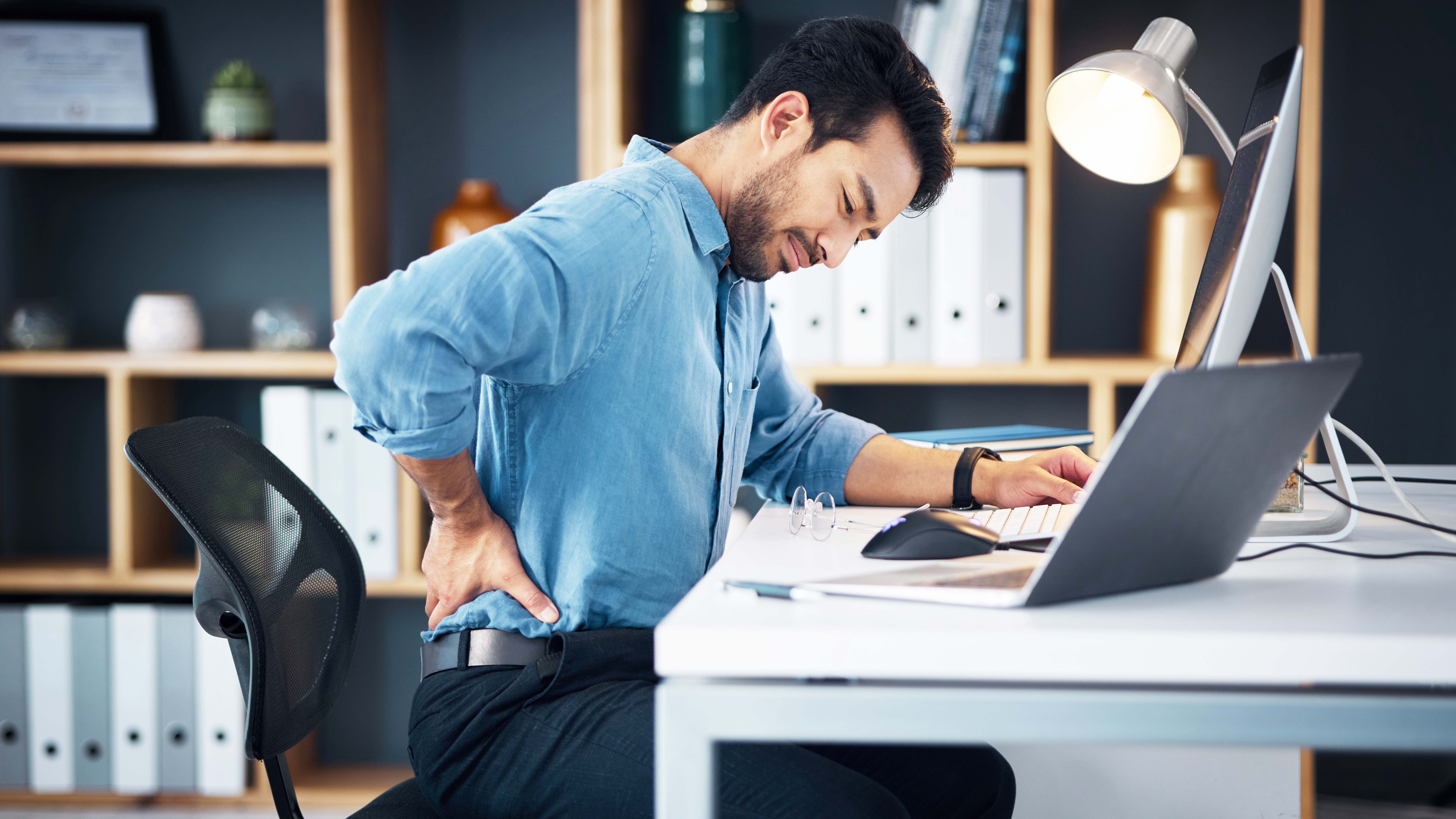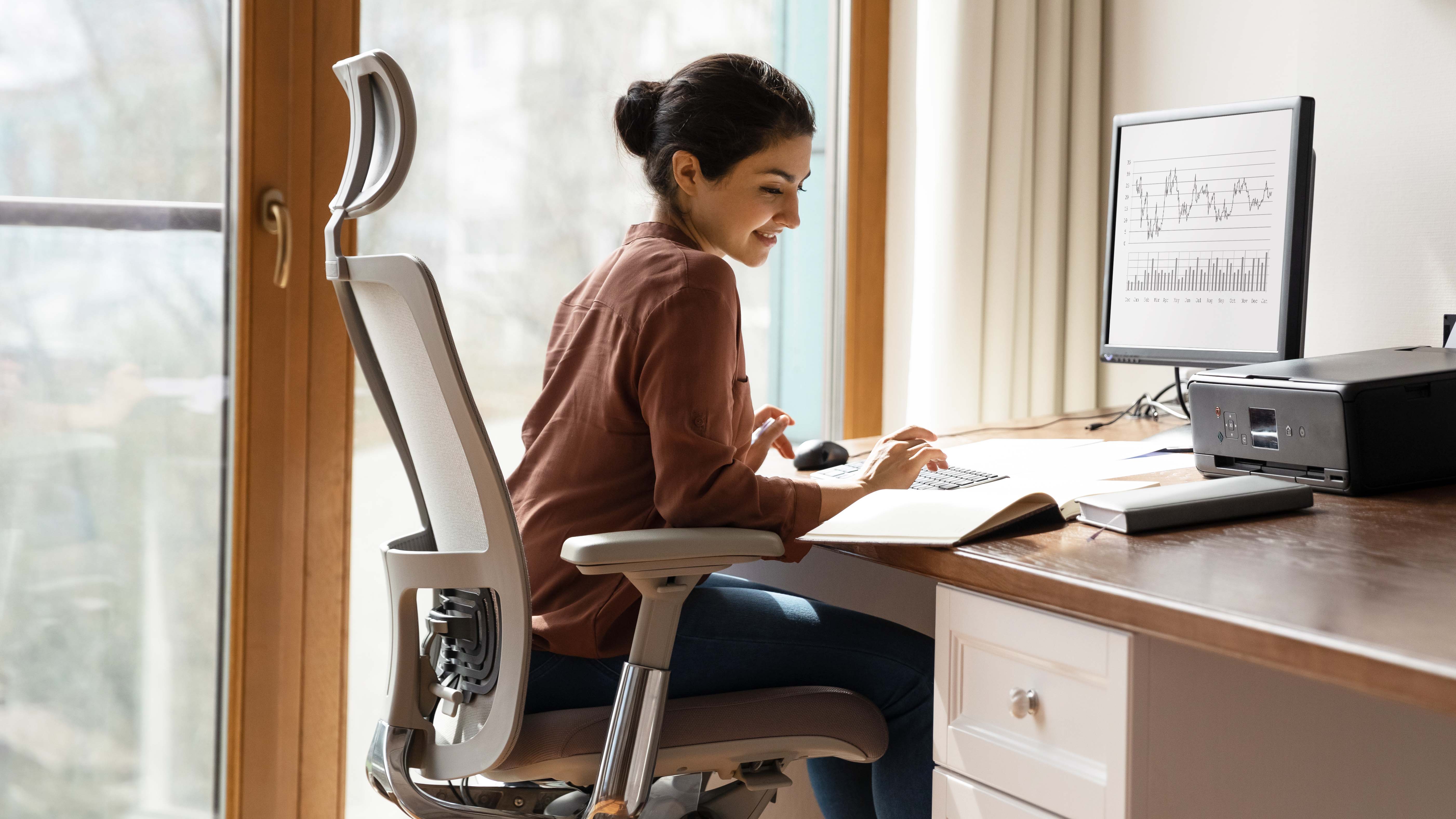What’s the best way to sit if you have lower back pain?
Your posture and position when sitting can either alleviate or worsen your lower back pain

As a certified personal trainer, one of the most common complaints I hear from my clients is the presence of persistent lower back pain. While there are many strength and mobility exercises you can do to address the issue, sitting for long periods on most days of the week can counteract all of those efforts.
Most of us have careers that require hours at our desks, and we don’t really have the option of trading our work environments for something more active. If that’s your case, all hope is not lost – there are some practices you can put into place that minimize the negative impacts from lots of sitting and help to reduce back pain overall.
If you spend your days in one of the best office chairs, here is the best way to sit with lower back pain.
What causes lower back pain?
There are myriad issues that can cause lower back pain, from tight hips and weakened core muscles to slipped intervertebral discs and genetic spinal conditions.
In order to determine the exact cause of your pain, you’ll need an evaluation from your doctor. They may use medical imaging like MRIs or X-rays to properly diagnose you and recommend a course of treatment.
What’s the best way to sit if you have lower back pain?
Since we spend the bulk of our days at work, creating some healthy habits at your desk can make some considerable differences in your pain levels.
- Place both feet flat on the floor, about hip-width apart. Sit tall with a neutral spine and your tailbone directly underneath you, with each vertebra stacked on top of the other.
- Imagine a little bit of space between each vertebra to keep your spine long and in a neutral position. You can also think of a small string coming from the top of your head towards the ceiling.
- Roll your shoulders back and keep a comfortable engagement in your shoulder blades. This shouldn’t feel like it takes a lot of effort — just a light squeeze.
- Keep a comfortable engagement in your core muscles. Again, this shouldn’t feel like effort, just a slight engagement when breathing.
- Keep your head and neck aligned on top of your spine, and maintain a 90-degree angle at your elbows (or close to it) when typing.
You’ll want to avoid the following:
Sign up to get the BEST of Tom's Guide direct to your inbox.
Get instant access to breaking news, the hottest reviews, great deals and helpful tips.
- Resist the urge to cross your legs or ankles, as these positions can tighten your hips and aggravate pain.
- Don’t slouch or allow your spine to round while sitting. Placing your computer screen at eye level can make it easier to sit taller.
- Be wary of rounding your shoulders forward. Sit close to your desk and make sure your keyboard is placed in a position where you can maintain a 90-degree angle at your elbows.
You should also consider these tips:
- Research ergonomic office chairs. Many are designed specifically for those with lower back pain and will promote proper posture when sitting.
- If you’re unable to switch chairs, look into lumbar support devices that you can use in conjunction with your current chair. Even something as cost-effective as a rolled-up towel placed in the natural arch of your lower back can alleviate pain.
- Find a platform that raises your computer screen to eye level and your keyboard to elbow height. Many keyboards also have wrist rests that can prevent or reduce carpal tunnel pain.
- If possible, try to stand up and walk around your office once per hour. This can help loosen muscles and joints that become restricted when sitting.

What’s the best way to sit in the car, on the floor, or on your couch if you have lower back pain?
Work isn’t the only place we sit. How we position ourselves during our commutes, while watching TV, or while playing with our kids can all affect lower back pain.
In general, the same rules apply to anywhere you sit. Keep a neutral spine with each vertebrae stacked on top of the other. Squeeze your shoulder blades together slightly and avoid rounding through the shoulders or slouching through your mid-back.
When driving, lumbar support devices that are used in chairs can be helpful in promoting good driving posture — even if it’s as simple as a small pillow or towel.

While couches and comfy chairs aren’t necessarily known for being extremely supportive, you can still sit in a way that doesn’t aggravate any existing issues. It may be tempting to kick back and recline, but keeping both feet planted is better for lower back health.
Finally, remember to sit tall on your tailbone and keep your core muscles engaged when on the floor. You can also choose to sit against a wall or solid structure for additional support and open up your knees to a “butterfly” position for better spinal alignment.
What else helps lower back pain?
Depending on your exact diagnosis, your medical team may suggest several different strategies to address your pain. Physical therapy, regular exercise, yoga and stretching, topical medications, pharmaceutical routes, and even surgical intervention can all be viable options.
More from Tom's Guide
- I suffer from sciatica — here's 9 exercises I swear by to stretch and strengthen the lower back
- I tried these 10 physical therapist-approved stretches to ease back pain — these are the exercises that actually made a difference
- This 6-move stretching routine boosts your mobility and offsets the effects of sitting
Jennifer Rizzuto is a freelance writer and certified personal trainer based in Long Island, NY. She covers various fitness-related topics and reviews for Tom's Guide. She also writes sketch comedy and short films, and performs frequently as an actor, singer, and improviser. When she's not writing, working out, or performing, you'll find her trying to convince her husband to get a dog.
You must confirm your public display name before commenting
Please logout and then login again, you will then be prompted to enter your display name.

